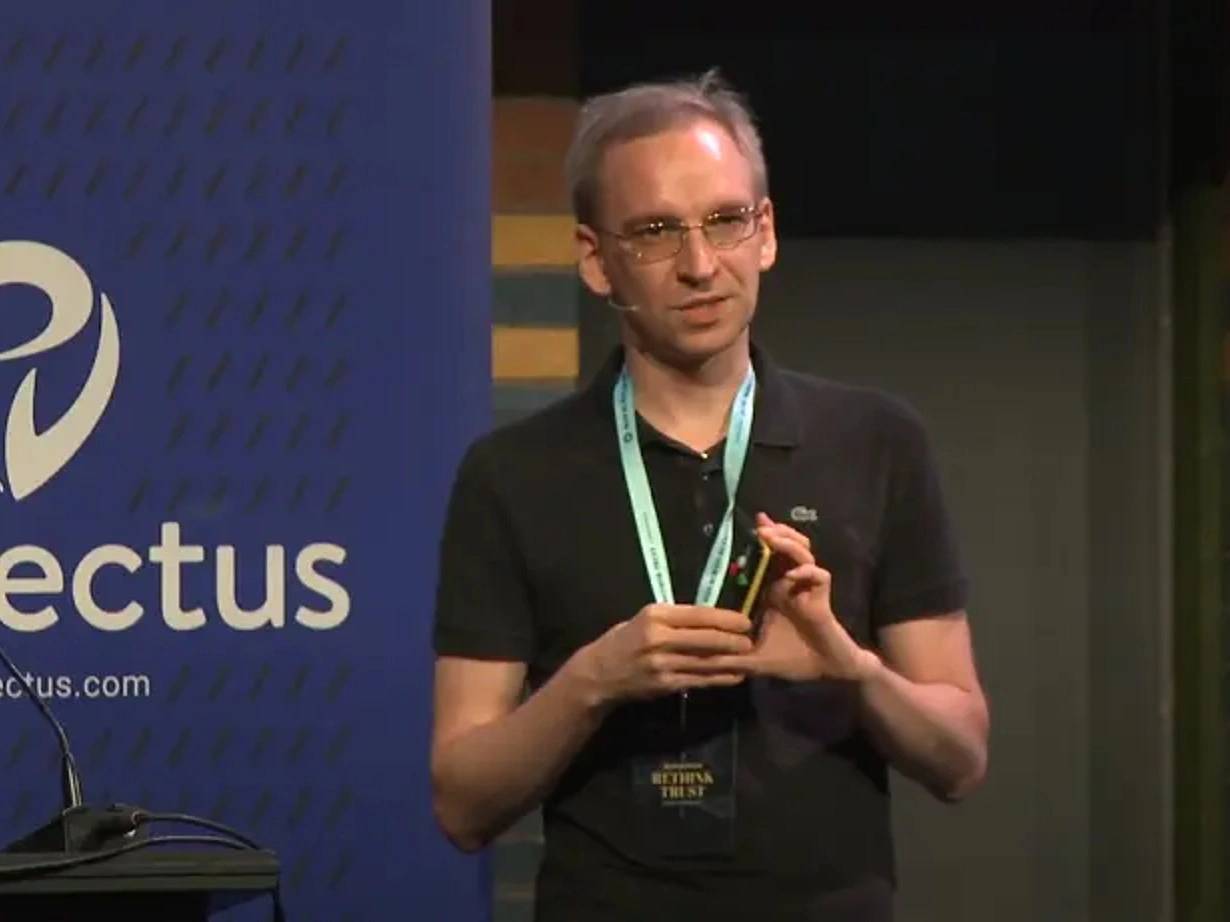订阅 wiki
Share wiki
Bookmark
Michael Egorov
Michael Egorov
Michael Egorov 是一位软件开发人员和企业家,他于 2020 年共同创立了Curve,一个去中心化交易平台。在创立 Curve 之前,Egorov 曾担任多家公司的软件开发人员,并担任区块链和加密货币项目的技术顾问。[1][2]
早年生活与教育
Michael Egorov 拥有莫斯科物理技术学院应用数学和物理学士学位。他获得了“红色”文凭,以表彰其出色的学业成绩。此外,在 MIPT 期间,他还在列别捷夫研究所完成了超冷原子领域的荣誉论文。[3]
为了继续他们的学术追求,Egorov 于 2008 年至 2011 年在斯威本科技大学获得了物理学博士学位 (Ph.D.)。他的博士论文侧重于双组分玻色-爱因斯坦凝聚体的相干性和集体振荡,展示了他们在该领域的专业知识。[3]
职业生涯
Michael Egorov 是 Curve Finance (curve.fi) 的现任首席执行官,这是一家总部位于瑞士的公司,由他于 2020 年 6 月创立。在此之前,他是 NuCypher 的首席技术官,NuCypher 是一个大数据加密层,它使用代理重加密来增强数据安全性。Michael 于 2015 年 3 月创立了 NuCypher,并担任其首席技术官至 2020 年 6 月。他还曾在莫纳什大学担任 2011 年至 2014 年的博士后物理学家,在那里他建造了一台新的 Rb-K BEC 机器。Michael 曾担任 LinkedIn、WorkLifeGroup、Netagi 和 VGTRK 等多家公司的软件工程师。他拥有 Python 编程经验,并参与过 Django Web 开发和配置工具等项目,这些工具适用于部署在数万台服务器上的数百种产品。此外,Michael 还是 2016 年 NuCypher 的 Y Combinator 创始人。[3]
Curve
Egorov 在加密货币行业的旅程始于 2013 年末,当时他购买了少量的 比特币。当时,他是一名物理学博士后研究员,最近获得了该学科的博士学位。后来,他们搬到美国在科技行业工作,并在此期间获得了关于加密货币的广泛知识。[5]
在 NuCypher 工作期间,Egorov 发现了 稳定币 的机会,因此他开始研究 Curve。在发布后的最初几个月里,他是唯一从事该项目的人。[4]
“开发 Curve 时,第一个挑战是找到去中心化、安全性和开发速度之间的平衡。建立一个良好的测试基础设施花了一些时间,并且发现了一些漏洞,以确保我们有良好的事件响应实践。”
Curve Finance 是一个于 2020 年 1 月推出的去中心化交易流动性池。它建立在 以太坊 上,专为高效交易 稳定币 和 比特币 而设计。[2] 该协议的治理代币 CRV 于 2020 年 8 月 13 日以一种不寻常的方式推出。一位使用 Twitter 账号 @0xc4ad 的匿名开发者在官方团队之前部署了该代币及其相关的 DAO 合约,并宣布他们这样做是为了“最大化我的 ALPHA!”在验证合约正确后,Curve 团队采用了该部署作为官方发布。@0xc4ad 的身份仍然是个谜,Egorov 在 2025 年 8 月评论说:“好问题!我今天仍然不太清楚。看起来和知道中本聪的身份一样难。”自推出以来,Curve 已成为 DeFi 流动性基础设施的基础组成部分。[7]
Egorov 一直专注于解决他所谓的“真正的链上流动性供应的最后一个主要障碍”:无常损失 (IL)。他表示,IL 是波动交易对的流动性仍然留在中心化交易所的主要原因。为了解决这个问题,他开发了 Yield Basis,这是一种旨在使流动性提供者能够在去中心化交易所支持 BTC 交易对的机制。虽然这个概念最初不是为 比特币 设计的,但他表示,其市场需求使其成为“显而易见的首选”。他认为,同样的机制稍后可以应用于其他资产,如 以太坊 或代币化的现实世界资产。[6]
Yield Basis
2025 年初,Egorov 宣布他正在开发一个名为 Yield Basis 的新项目,以减轻流动性提供者的无常损失。2025 年 2 月,据报道,该项目以 5000 万美元的完全稀释估值筹集了 500 万美元。此次融资出售了总计 10 亿个“YB”代币供应量的 10%。[8]
Yield Basis 旨在通过修改自动做市商 (AMM) 来提高流动性供应的盈利能力。该系统使用 2 倍杠杆,流动性提供者借用 Curve 的稳定币 crvUSD 来将其在 BTC/USD 等交易池中的头寸翻倍。这种杠杆旨在以一种可以消除无常损失的方式修改流动性比率,同时使提供者赚取的交易费用翻倍。为了管理借贷和再平衡的成本,Yield Basis 使用 Curve 的 CryptoSwap AMM 将流动性集中在活跃的交易区域。借用 crvUSD 的人支付的利息,以及 AMM 交易费用的一半,用于支付再平衡成本。[8]
该项目最初针对代币化的比特币和以太坊持有者。该模型的回溯测试表明,2019 年 1 月至 2024 年 11 月期间的平均年利率为 20.5%。截至 2025 年 2 月,Egorov 表示该项目处于“生产测试”阶段,测试和审计正在进行中。他指出,该系统在波动性较小的“蓝筹”资产(而不是像 memecoin 这样波动性很大的资产)中似乎最有利可图。[8]
观点和理念
在 2025 年 8 月的一次采访中,Egorov 分享了他对加密货币行业各个方面的看法。[6]
关于 Layer-2 和创新
Egorov 对 2025 年围绕 Layer-2 (L2) 扩展解决方案的兴奋情绪表达了保留意见。他表示,它们的发展是一个持续的过程,并且 2025 年看到的进展并不是一个突然的突破。他评论说:“L2 的开发已经进行了多年,它们将继续发展——我不认为 2025 年在这方面有任何特别之处。”[6]
关于比特币和以太坊
Egorov 认为比特币的主要作用是一种“数字黄金”,而不是日常交易的媒介,他说:“我很难想象它被广泛用于购买咖啡等休闲日常支付。”相比之下,他设想 以太坊 成为全球金融体系的基础层,类似于 Linux 如何在关键基础设施的“幕后”运行,而大多数用户都没有意识到这一点。[6]
关于去中心化和发展
根据 Egorov 的说法,完全去中心化是对抗监管压力的最有效防御。“如果你真的不控制该平台,那么根据定义,任何人都无法控制它,”他说。他还强调了这种模式的挑战,特别是构建不可变的智能合约时需要极其谨慎,因为没有“以后修补安全漏洞的奢侈”。从他运营 Curve 的经验来看,他学会了谨慎对待外部集成,并指出虽然可组合性是 DeFi 的优势,但它也增加了风险面。在社区方面,他认为“良好的社区管理和快速的技术支持可以实现非常有效的营销。”[6]
法律事务
2025 年 1 月,Michael Egorov 赢得了一项重要的法律胜利,风险投资公司 ParaFi、Framework Ventures 和 1kx 对他提起的诉讼被驳回。该诉讼在加利福尼亚州阿拉米达县高等法院提起,指控欺诈和盗用商业秘密。原告声称他们被欠 CRV 代币和 Curve 瑞士实体的股权。法院以“不方便法院”为由驳回了此案,裁定瑞士是审理此案的适当管辖地。作为裁决的一部分,针对 Egorov 资产的 6000 万美元的扣押令也被解除。[9]
发现错误了吗?
